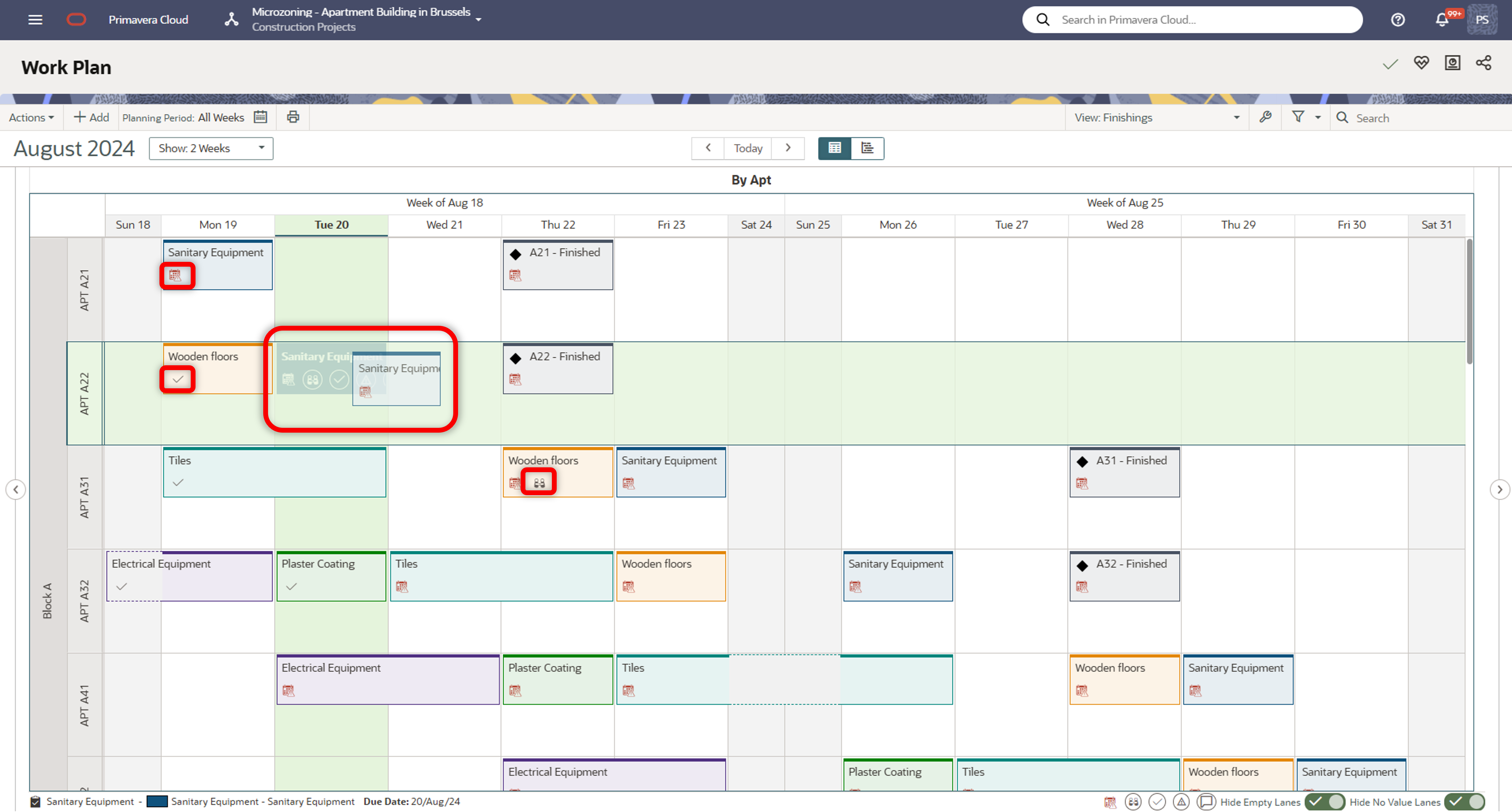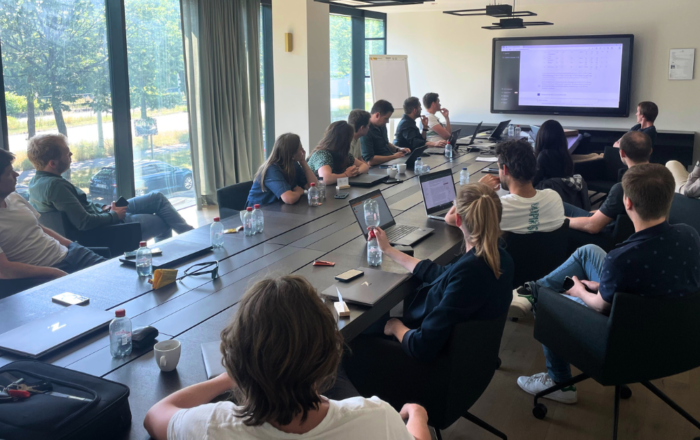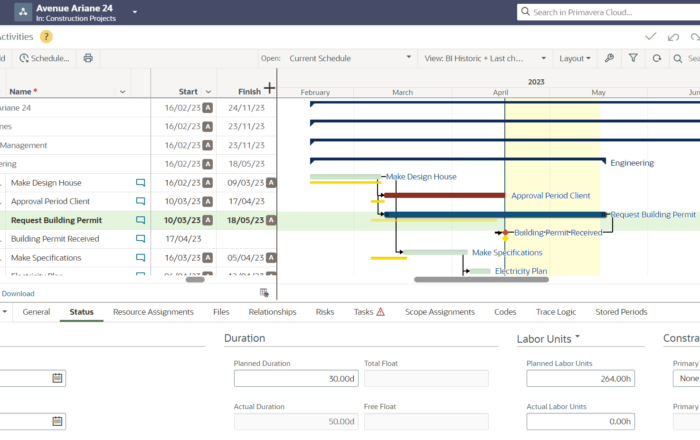
Lean planning with Oracle Primavera Cloud: a smarter way to manage construction projects


Lean planning methods, such as microzoning and just-in-time scheduling, help by breaking down work into smaller, more manageable zones while optimizing processes. However, seamless coordination between all stakeholders remains a hurdle. This is where Oracle Primavera Cloud (OPC) makes a difference, offering a powerful tool that integrates critical path and lean scheduling methods to bring structure, efficiency, and visibility to construction projects.
Why Oracle Primavera Cloud is the right tool
At Proove, we have long been advocates of OPC’s unique ability to combine the precision of critical path planning with the flexibility of lean scheduling. In a previous blog post, we shared our excitement about how OPC’s Schedule app enables high - level planning while allowing teams to break down larger activities into smaller, actionable tasks to which field teams can commit.
Recently, OPC has introduced an exciting new feature in its Task App: swimlanes - a true game-changer for tackling the challenges of field coordination and task visualization.
The value of task milestones and visual progress tracking
One of the most powerful aspects of OPC’s lean planning capabilities is the introduction of task milestones, which provide a clear visual representation of key deadlines. By marking milestones for critical project phases, teams can quickly understand what needs to be completed in the coming weeks and how much buffer time is available. This proactive approach not only helps in tracking progress but also allows project managers to communicate updates to stakeholders in a simple and transparent manner.

For instance, in our apartment finishings example, each apartment's completion can be tracked using a milestone at the end of its task sequence. Color-coded task categories make it easy to identify work that has been completed, work in progress, and potential bottlenecks that require attention. Reports and dashboards further enhance visibility, offering insights at a glance, making it easier to stay on top of project performance.
Introducing swimlanes
This new feature allows project teams to arrange tasks in a way that provides greater clarity and control. Tasks can be displayed visually using swimlanes, which act as organizational lanes - just like those in an Olympic swimming pool - where tasks can be grouped by different criteria such as team responsibility, work area, or priority. This intuitive approach makes it easier to see dependencies, manage workloads, and ensure that everyone knows exactly what needs to happen next.
With swimlanes, project teams can drag and drop tasks across different dates and categories, adjusting schedules dynamically to fit evolving site conditions. OPC offers a high degree of flexibility by allowing unlimited swimlanes with multiple levels that can be customized according to project needs. This means teams can structure their planning based on users, companies, or the Work Breakdown Structure (WBS), ensuring alignment between fieldwork and project goals.
Another advantage of swimlanes is their availability on OPC’s mobile app, making it easier than ever for teams to stay connected - whether they are on - site or in the office. With access to real-time data, updates can be made online or offline, ensuring that critical information is always at hand when it's needed most.

To illustrate the impact of OPC’s lean planning capabilities, let’s consider a real - world example - managing the finishing phase of an apartment construction project. In a typical scenario with 32 apartments spread across four blocks, each apartment involves multiple finishing tasks such as flooring, electrical installations, and painting.
Traditionally, managing such a project using only a CPM schedule would result in the creation of hundreds of activities, making it cumbersome to track progress and coordinate efficiently. Instead, by adopting OPC’s hybrid approach, planners can simplify the schedule significantly by consolidating work into a smaller number of high - level activities while handling the details with tasks.
For example, instead of tracking each individual task separately, OPC enables teams to focus on overarching activities like “Apartment Finishings” at the block level, while the finer details are managed within the task board. This approach reduces complexity, improves visualization, and allows field teams to take ownership of their tasks without getting lost in an overly detailed CPM schedule.

According to our lean planning expert, Stan Meuser, many field professionals struggle with rigid schedules because they lack the flexibility to adapt to real-world conditions. By using OPC, schedules become more interactive, enabling teams to define tasks in collaboration with field experts and make adjustments as needed, ensuring realistic commitments and better project outcomes.

Bringing flexibility to Lean Planning with OPC
Beyond apartment construction, Task Plans and Swimlanes have proven to be highly effective across a range of use cases. Whether it’s shutdown planning, where precision and timing are critical, or agile sprint planning, where short cycles of work need to be organized efficiently, OPC provides the structure needed to ensure success. The ability to organize tasks by disciplines, areas, or teams allows planners to optimize workflows, reduce waste, and improve overall project efficiency.
One particularly exciting application is Takt planning, which focuses on creating a steady rhythm of work across different project phases. With OPC, it becomes easier to visualize this rhythm and ensure that teams are aligned and progressing according to plan, reducing downtime and enhancing productivity.
Seamless collaboration between site and office
With OPC’s mobile app, collaboration between site teams and office staff has never been easier. Field workers can mark tasks as complete, update due dates, and identify issues in real time, ensuring that everyone stays aligned on project goals. If a delay arises, adjustments can be made instantly by dragging and dropping tasks within the swimlanes, helping teams respond to challenges without losing momentum.


This connectivity allows for continuous feedback and learning, enabling organizations to refine their planning processes over time and achieve better results with each project.
Conclusion: how OPC helps you work smarter, not harder
At Proove, our extensive experience with Oracle Primavera Cloud has given us a front-row seat to its evolution and growing impact on the construction industry. OPC stands out as a comprehensive solution that merges the rigor of critical path planning with the flexibility of lean scheduling, empowering project teams to work smarter and more efficiently.
By providing high-level visibility at the activity level and detailed task management on the ground, OPC ensures that every stakeholder, from field workers to senior managers, has the information they need to make informed decisions. Whether it's tracking milestones, visualizing progress, or making real-time adjustments, OPC delivers the tools necessary to keep projects on schedule and within budget.
If you’re looking to bring more clarity and control to your project planning processes, Oracle Primavera Cloud with Proove is the way forward. Reach out to us today to discover how we can help you streamline your operations and maximize your project's success.




